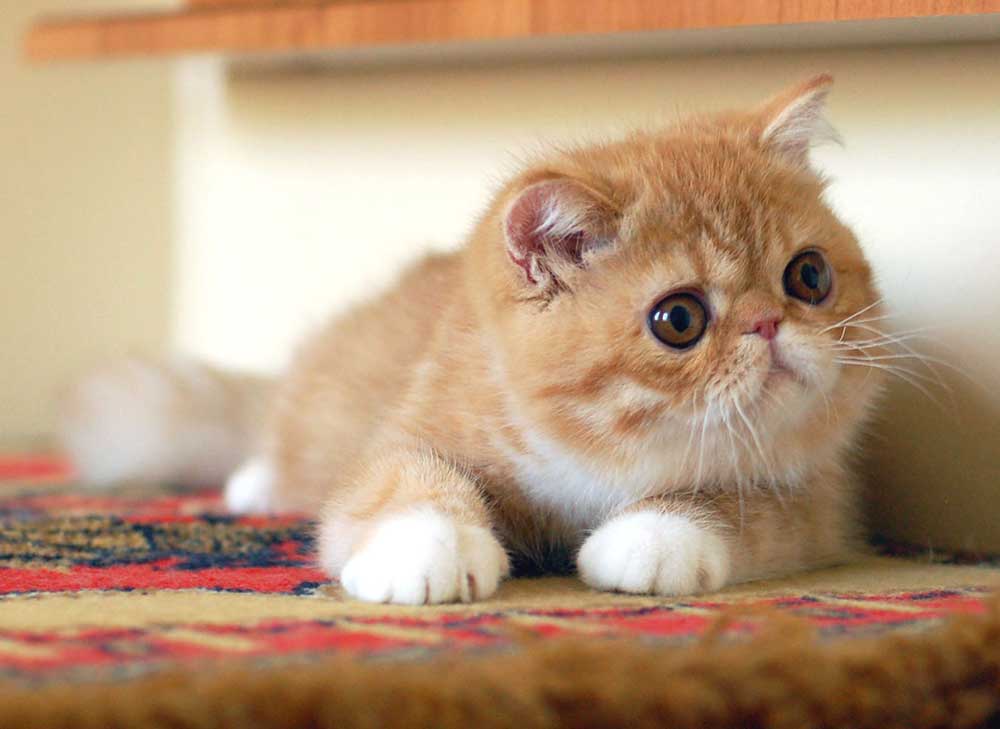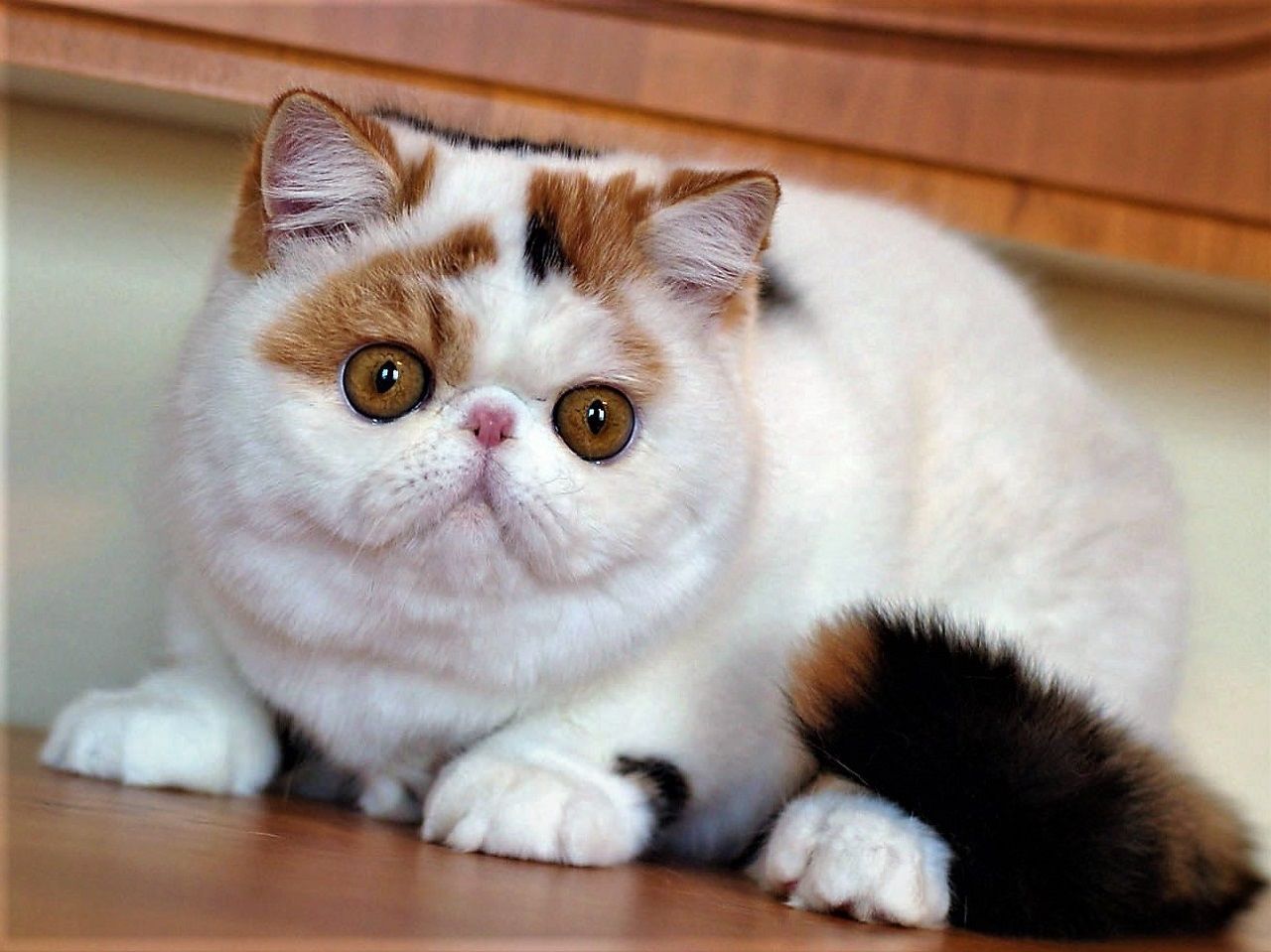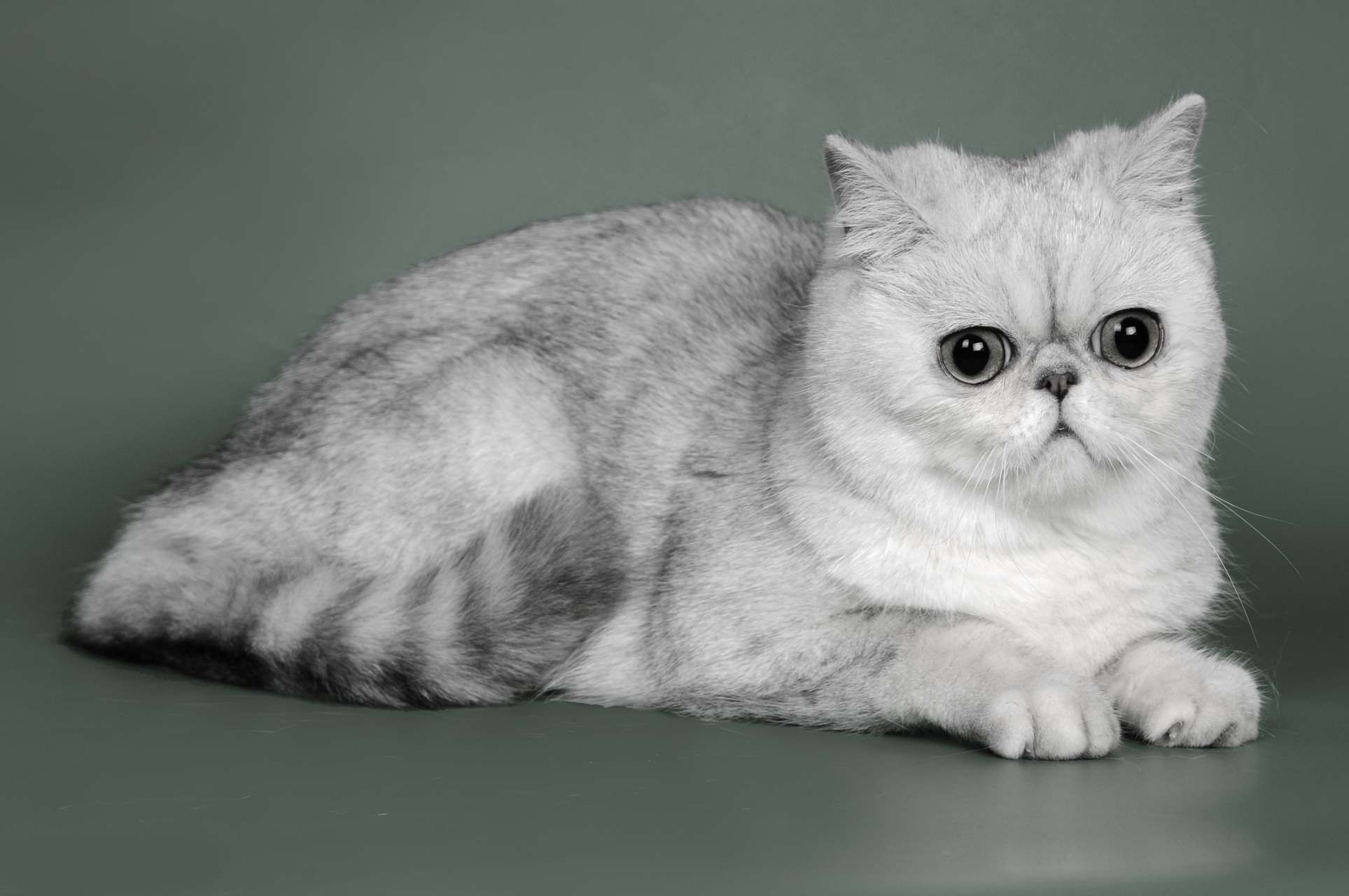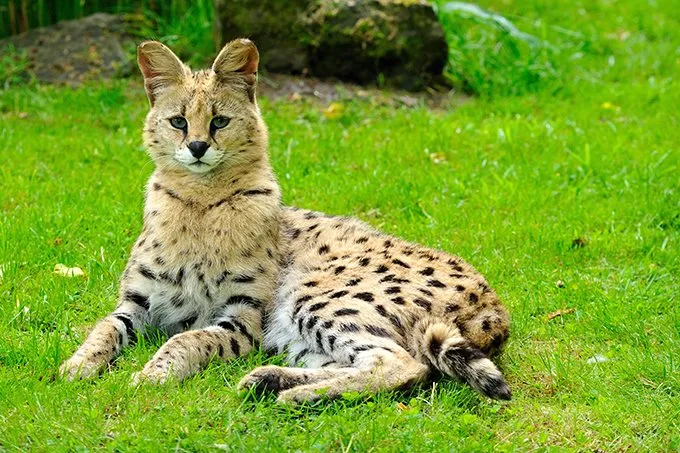Cat Origins
Bengal Cats: Hybrid of Domestic and Asian Leopard Cat

The Bengal cat is a domesticated feline that originated from the crossbreeding of the American Domestic Shorthair with the Asian Leopard Cat, a wild species native to Asia and China. This unique hybrid has gained immense popularity due to its striking appearance, playful temperament, and affectionate nature.
The exotic origin of Bengal cats lies in their ancestor, the Asian Leopard Cat. While not typically considered a “pet” cat, the Asian Leopard Cat is still a relatively small species within the wild leopard cat family. With distinctive spots or marbling on their fur and varying shades of grey, brown, and golden coats, these animals are often sought after by zoologists and breeders alike.
When crossbreed with domestic cats, specifically American Shorthairs, Asian Leopard Cats contribute unique traits such as vibrant coat colors and distinctive patterns. The result is the Bengal cat, characterized by its striking marmorated or spotted pattern, which often resembles that of a clouded leopard.
Bengal cats possess numerous qualities that set them apart from other domesticated breeds. They are generally energetic and curious, requiring plenty of playtime, interactive toys, and stimulating environments to prevent boredom. Additionally, Bengal cats tend to be extremely intelligent and responsive to training, making them relatively easy to handle.
Despite their unique characteristics and hybrid origin, Bengal cats have earned a special place in the hearts of many exotic cat enthusiasts. As these animals continue to thrive within controlled breeding programs, their appeal extends beyond mere novelty. Instead, they showcase what makes feline hybrids truly remarkable creatures – their adaptable yet fiercely independent nature.
In summary, Bengal cats stand out due to their fascinating hybrid origin combining elements of both the wild and domestic worlds. Their striking physical appearance and engaging personalities only add to their allure as an exotic feline companion.
Wild ancestor: Prionailurus bengalensis, the Asian leopard cat.
The Asian leopard cat (Prionailurus bengalensis) is a wild ancestor of domestic cats that can be found in Southeast Asia, particularly in countries such as China, India, and Thailand. This species belongs to the Felidae family and is characterized by its distinctive coat patterns featuring dark spots or rosettes on a golden-brown background.
The Asian leopard cat is a medium-sized wild cat with adult individuals weighing between 3-15 kg (6.6-33 lbs) and measuring up to 60 cm (24 in) in length, including their tail. They have a short, broad head with a flat forehead, small ears, and a relatively long, thin body.
The species is primarily nocturnal, meaning they are most active at night, but can also be seen during the day. Asian leopard cats are excellent climbers and are known to scale trees in search of food or shelter. They inhabit diverse environments including forests, grasslands, and even urban areas, where they often adapt to living among humans.
The diet of the Asian leopard cat consists mainly of small mammals such as rodents, birds, reptiles, amphibians, and insects. They are skilled hunters using stealth and agility to catch their prey. In captivity, they have been observed displaying playful behaviors like pouncing on toys, indicating a high level of intelligence.
Domestic cats descended from the Asian leopard cat share many characteristics with their wild ancestors, such as coat patterns, behavior, and physical traits. However, domestication has led to significant changes over time, including smaller size and altered coat types due to selective breeding by humans.
The scientific classification of Prionailurus bengalensis includes the following levels: Kingdom – Animalia, Phylum – Chordata, Class – Mammalia, Order – Carnivora, Family – Felidae, Genus – Prionailurus, and Species – P. bengalensis.
The conservation status of Asian leopard cats varies depending on the region; while they are listed as least concern globally by the IUCN Red List, some countries have them listed as endangered due to habitat loss, hunting for their fur or body parts believed to have medicinal properties, and human-wildlife conflict.
Breeding started in 1960s.
Cat Characteristics
Nature and Behavior of Exotic Cats

The term “exotic cats” typically refers to various subspecies of big cats, such as lions, tigers, leopards, jaguars, and cougars, that are native to specific geographic regions outside of their typical ranges.
Exotic cats are often referred to as exotic due to their rarity in the Western world or their unusual appearance, which can make them seem more exotic compared to domesticated animals.
The term “exotic” also implies a level of danger and unpredictability associated with these wild predators, which is part of what makes them fascinating to many people.
Some examples of exotic cats include the Asiatic lion, the Amur leopard, and the snow leopard, each with unique characteristics such as distinctive coat patterns or adaptations to specific climates.
The behavior of exotic cats in their natural habitats can be quite different from that of domesticated cats, with behaviors such as hunting, territorial marking, and social interactions being more complex and intriguing.
Exotic cats are also known for their impressive physical abilities, such as speed, agility, and strength, which they use to survive and thrive in their respective environments.
In many cases, exotic cats have undergone significant changes over time due to various factors such as habitat loss, human activity, or genetic adaptations, making them even more fascinating to study and observe.
Conservation efforts are underway to protect these magnificent creatures and their habitats, ensuring the preservation of biodiversity and the continued survival of these incredible animals for future generations.
The natural behavior of exotic cats is shaped by their evolution as apex predators in their respective environments, with each species having unique adaptations that enable them to thrive in diverse ecosystems.
Vocal: loud, frequent calls; more vocal than domestic cats.
Vocalization is a critical aspect of feline behavior, with some species being notably louder and more vocal than others, including domestic cats.
Exotic cats, which refer to non-domesticated cat species such as lions, tigers, leopards, jaguars, and cougars, are indeed known for their loud and frequent calls.
In the wild, these vocalizations serve a variety of purposes, including communication between members of the same species, warning other animals of potential threats, and even attracting mates.
The frequency and volume of exotic cat vocalizations can vary greatly depending on the specific species and context.
For example, lions are known for their loud roars, which can be heard from miles away and serve as a warning to other predators to stay away.
In contrast, tigers and leopards tend to make more subtle vocalizations, such as growls or chirps, often in response to potential threats or when communicating with cubs.
Cougars, on the other hand, are generally quieter than many other exotic cat species, but will still produce loud hisses or spits when feeling threatened or territorial.
The reasons behind the unique vocal characteristics of exotic cats can be attributed to a combination of factors, including their evolutionary history, social behavior, and environmental adaptations.
For instance, lions live in large prides, which requires them to communicate effectively with each other over long distances.
This need for long-distance communication may have driven the evolution of their loud roars, while tigers and leopards, which tend to be more solitary animals, may not require such loud vocalizations to communicate with each other.
Additionally, exotic cats’ vocalizations can also reflect their specific habitat and environmental pressures.
In areas with high levels of human activity or noise pollution, exotic cat species may adapt by modifying their vocalizations to be less conspicuous or more efficient in conveying information.
This remarkable ability to adjust their vocal behavior in response to changing environments demonstrates the incredible flexibility and resilience of these fascinating creatures.
Overall, the diverse range of vocal behaviors exhibited by exotic cats underscores the importance of considering both species-specific characteristics and environmental context when studying feline communication and behavior.
Playful, curious; require stimulation, exercise.
More aggressive, territorial, and dominant than domestic cats.

The term exotic cat refers to a type of big cat that is often kept as a pet, but unlike domestic cats, these animals are not native to the United States or Europe. Exotic cats are typically found in the wild and are known for their distinctive physical characteristics, impressive size, and powerful personalities.
One of the key factors that contributes to an exotic cat’s aggressive behavior is its natural instinct to hunt and defend itself from predators. In the wild, these cats have developed strong territorial instincts, which can make them more protective and defensive when they feel their territory or family is being threatened.
Compared to domestic cats, exotic cats are generally more dominant due to their natural hierarchy in the wild. They have a strict social structure, with alpha males leading the pride and defending its members from other predators. This dominance is reflected in their behavior around humans, where they may assert their authority through vocalizations or body language.
Exotic cats are often described as territorial due to their strong attachment to a specific area or territory. In the wild, these cats mark their territory with scent and scratch marks on trees or rocks, signaling to other animals that this is their domain. When kept as pets, they may exhibit similar behavior around their food bowls or favorite sleeping spots.
The dominant personality of exotic cats can also be attributed to their unique genetics and breeding history. In some cases, these cats have been selectively bred for specific traits such as size, coat color, or temperament, which can amplify their natural assertiveness and confidence around humans.
It’s worth noting that owning an exotic cat as a pet comes with significant responsibilities and challenges. These animals require specialized care and housing, and owners must be prepared to provide them with the space, socialization, and veterinary attention they need to thrive.
In summary, exotic cats are characterized by their aggressive, dominant, and territorial behavior due to their natural instincts, breeding history, and unique genetics. While owning an exotic cat can be a rewarding experience for experienced animal enthusiasts, it’s essential to approach these animals with respect and caution.
Ultimately, the decision to own an exotic cat should not be taken lightly, as these animals require dedicated care and attention that may exceed what some owners are willing or able to provide. However, for those who are prepared to commit to providing a suitable environment and socialization for their exotic cat, the rewards can include a strong bond between human and animal and a unique perspective on the natural world.
Physical Appearance
Coat Patterns in Exotic Cats
Cat enthusiasts have long been fascinated by the exotic characteristics of certain feline breeds, including their unique coat patterns.
The term “exotic” when referring to cats usually pertains to a group of breeds that are not as commonly found in shelters or households compared to other popular cat breeds like domestic shorthairs and Siamese.
Some examples of exotic cat breeds include the Bengal, Savannah, Maine Coon, and Abyssinian. These breeds often possess distinctive coat patterns that set them apart from their more common counterparts.
Exotic cats have a wide array of coat patterns, including marbled, spotted, tabby, solid, and pointed. Each of these patterns is the result of specific genetic combinations that influence the production of melanin in the hair follicles.
Cat Coat Patterns
Here are some common coat patterns found in exotic cats:
Mardle/Tabby Spotted: This pattern features a mix of marbled and spotted tabby markings, resulting in an appearance that’s both mottled and speckled.
Marbled/Ticked Tabby: Also known as “marbled” or “ticked,” this coat pattern involves subtle variations in color that create a marbled effect across the cat’s fur.
Mitted: The mitted pattern features large white patches on the cat’s paws and face, with colored fur on the rest of its body.
Ticked: Ticked tabbies feature tiny agouti hairs that give a salt-and-pepper effect to the coat.
Causes of Coat Patterns in Exotic Cats
The formation of coat patterns is primarily influenced by genetics, with multiple genes contributing to specific traits such as color and pattern distribution.
The Agouti Gene: This gene controls the production of agouti hairs in tabby coats. It has two primary functions – to create the banded appearance seen on most felines, or to eliminate this effect and produce a solid color instead.
The Extensive Pseudogene (EP): This gene affects the expression of black pigment production within a cat’s coat.
Other genes involved in creating exotic cat patterns include:
Non-agouti allele: this creates a non-banded, solid or tabby-like effect on the coat of cats.
The Mitted gene: This is responsible for creating the distinctive white patches seen in mitted felines.
Careful consideration of genetics and understanding the complex interplay between multiple genes can provide a more profound insight into why these cats exhibit their unique coat patterns, making exotic breeds some of the most fascinating and captivating animals on Earth.
Marbled, spotted, or solid coats; some have rosettes like leopards.
Cats belonging to the Felidae family exhibit a diverse array of coat patterns and colors that set them apart from one another. Among these, marbled, spotted, or solid coats are particularly noteworthy for their striking visual characteristics.
The marbled coat pattern features swirling shapes and patches in different shades of fur, giving the appearance of marble or mottling. This effect is often seen in breeds such as the Bengal and the Ojos Azules. In contrast, a spotted coat consists of rounded or oval-shaped spots on a background of a different color.
The solid coat is characterized by an even, unbroken color across its entire surface. Some breeds, like the British Shorthair, have a broad range of colors that can appear in their solid coats, including blue, white, and bi-color variations.
One additional feature that some exotic cats exhibit is rosettes, similar to those seen on leopards. These are circular patterns formed by the connection of individual spots, creating a distinctive “rose-like” effect on the cat’s coat.
The combination of these unique coat characteristics, along with other features like size and body type, contributes to what makes certain cats considered “exotic.” For example, larger breeds like the Maine Coon or the Savannah often possess a more muscular build than smaller domesticated cats, while others, such as the Asian leopard cat, have distinctive rosette patterns on their coats.
As exotic cats are typically less common and may have origins that date back to ancient civilizations, they tend to be highly prized for their unusual appearance and rare characteristics. The unique coat patterns of these animals often inspire owners to admire them all the more, valuing not only their aesthetic appeal but also their extraordinary nature.
The intricate diversity of coats among exotic cats serves as a testament to the remarkable adaptability and variation within this family of animals. This array of characteristics underscores why certain breeds are considered unique and highly sought after in both domesticated pet trade and wildlife conservation efforts.
Coats vary by breed: Bengal (stripes), Savannah (golden coat with dark spots).
Size varies among breeds.
The term “exotic” is often associated with domesticated cats, but it doesn’t refer to their wild ancestors. Rather, it describes a group of cat breeds that originated from outside Europe and Asia, typically from the Middle East, Africa, or Southeast Asia.
Size varies among breeds, making some exotic cats larger than others. For example:
The Bengal is one of the largest domesticated breeds, with males weighing up to 15 pounds (6.8 kg) and females up to 10 pounds (4.5 kg). This breed combines the Asian leopard cat with a domestic cat.
The Savannah is another large breed, weighing between 9-20 pounds (4-9 kg), depending on its generation and size of its wild parent. These cats are a cross between a domestic cat and a serval.
On the other hand, some exotic breeds, like the Singapura, can be quite small. Weighing in at just 6-8 pounds (2.7-3.6 kg) for males, and 4-6 pounds (1.8-2.7 kg) for females, this breed is one of the smallest domesticated cats.
While size can vary among breeds, many exotic cat owners value their distinctive appearance, energetic personalities, and unique characteristics.
Breeders have developed several hybrids with exotic wild ancestors to meet these demands. Some examples include:
- Bengal: A cross between a domestic cat and an Asian leopard cat.
- Savannah: A hybrid of a domestic cat and a serval.
- Chausie: Combines the domestic cat with the jungle cat, resulting in large cats with striking coat patterns.
- Pixie-bob: Another cross between a domestic cat and an American Bobcat, which is much smaller but has a similar spotted coat pattern to the Bengal and Savannah.
The distinctive appearance of exotic cats often makes them stand out from other breeds. Many have striking coat patterns, including spots, marbling, or tabby designs.
For instance:
The Ojos Azules (Blue Eyed White) Abyssinian has a unique white and ticked coat pattern combined with blue eyes for a truly exotic appearance.
The Bengal’s distinctive spotted or marbled pattern adds to its appeal, while the Savannah is often characterized by large spots of color on an otherwise dark background.
The size and striking appearance of these breeds have contributed to their popularity among cat fanciers worldwide.
In addition to physical characteristics, many exotic breeds have unique personalities that are also highly valued. For example:
Bengal cats are often described as energetic and playful, requiring regular exercise and mental stimulation to prevent boredom.
Savannahs are known for their curious nature, always exploring their surroundings and seeking out new experiences.
Chausies have a strong prey drive, making them excellent hunters of small animals such as mice or even birds if left outside unattended without proper supervision.
The combination of physical characteristics, energetic personalities, and unique traits has contributed to the exotic reputation of these cat breeds among enthusiasts.
Breeding and Hybridization
Hybrid Cats: Purpose and Risks
The term “exotic cat” refers to domesticated cats that belong to rare or unusual breeds, which are often developed from crossing two different purebred species. These cats are called “hybrid” because they combine characteristics from their parent breeds.
Hollywood, Bengal, and Savannah cats are just a few examples of these exotic felines. They have unique features such as striking coat patterns, large ears, and muscular builds. Some even have distinctive tail lengths or markings that resemble those found in wild cats like leopards or cheetahs.
The primary purpose behind breeding hybrid cats is to create pets with specific characteristics. Breeders aim to produce animals that not only possess desired traits but also thrive as companions, making them a perfect fit for those seeking an unconventional pet experience.
However, there are some inherent risks associated with owning exotic or hybrid cats. For one, their unusual ancestry often means they may exhibit unpredictable behavior, which can be challenging to manage, especially if the owner has limited experience caring for such animals.
Another significant concern is the health implications of interbreeding purebred species. As a result, these felines are more susceptible to inherited disorders and diseases that might not manifest in their parent breeds.
Carefully research any potential risks or concerns associated with owning an exotic cat before making a decision to bring one into your home.
Exotic cats typically command higher prices due to the rarity of these animals, as well as the specialized care they often require. It is crucial to factor this expense into your budget and ensure that you’re prepared to meet their specific needs.
Hybrid cats can make wonderful companions for those who are willing and able to provide the necessary care. However, it’s essential to understand both the benefits and risks involved in owning such a pet.
Breeding to produce unique, exotic cats; e.g., Bengals combine domestic and Asian leopard cat traits.
Risk of genetic disorders, sterility in female offspring.
The risk of genetic disorders in exotic cats is a significant concern for breeders and owners alike. Many exotic cat breeds are the result of selective breeding, which can lead to a higher incidence of genetic problems.
Cat breeding involves careful selection of parents with desirable traits, such as coat color or size. However, this selective breeding process can also increase the likelihood of inherited disorders.
Genetic disorders in cats can be caused by a variety of factors, including:
Mutation: A genetic mutation is a change in the DNA sequence that can occur spontaneously or as a result of environmental factors. Mutations can affect any gene and may cause a range of effects, from mild to severe.
Chromosomal abnormalities: Chromosomal abnormalities are changes in the number or structure of chromosomes. These abnormalities can be caused by errors during cell division or exposure to radiation or chemicals.
Crossbreeding: Crossbreeding involves breeding two cats from different breeds or populations. While crossbreeding can help reduce the incidence of genetic disorders, it also increases the risk of new disorders emerging due to the combination of different genes.
The risk of genetic disorders is higher in exotic cat breeds that have been developed through selective breeding for specific traits. For example:
Sphynx cats: These hairless cats are prone to skin problems and may experience respiratory issues due to their unique physiology.
Devon Rex cats: This breed is known for its curly coat, but they can be prone to patellar luxation (kneecap dislocation) and other joint problems.
Female offspring are also at risk of sterility due to various factors. Some common causes of sterility in female cats include:
Genetic factors: As mentioned earlier, genetic mutations or chromosomal abnormalities can affect fertility in female cats.
Hormonal imbalances: Hormonal imbalances, particularly an underactive thyroid gland (hypothyroidism), can cause sterility in female cats.
Other factors such as age, nutrition, and environmental toxins may also contribute to sterility in female offspring. It’s essential for breeders and owners to understand these risks and take steps to minimize them.
To minimize the risk of genetic disorders and sterility, it is recommended that:
Breeders choose healthy parents: Select parents with a proven track record of producing healthy offspring.
Genetic testig: Conduct DNA tests to identify potential genetic disorders before breeding.
Prioritize proper care and nutrition for the mother cat during pregnancy and lactation.
Maintain good hygiene, vaccinations, and parasite control measures to reduce the risk of disease transmission.
- Best LeadsGorilla Alternatives for 2025 - April 19, 2025
- Best Coldlytics Alternatives for 2025 - April 19, 2025
- Best Brevo Alternatives for 2025 - April 18, 2025



